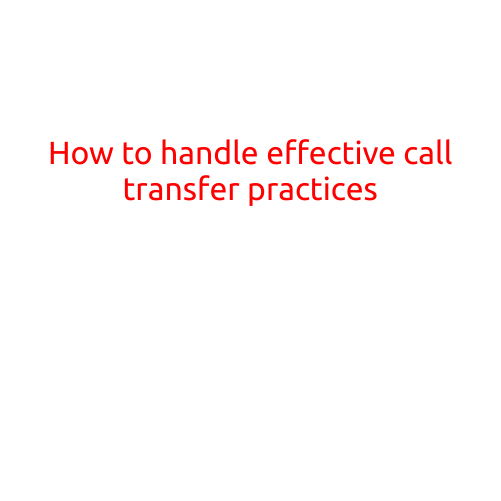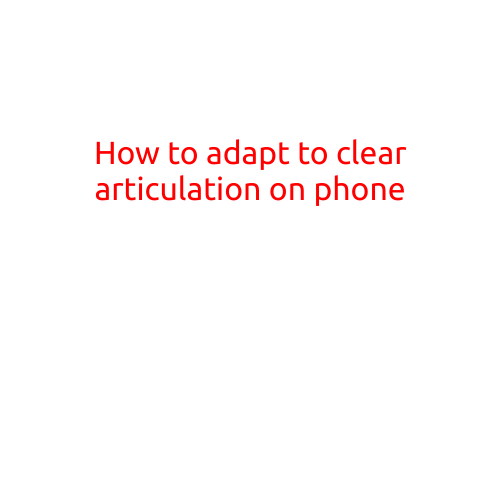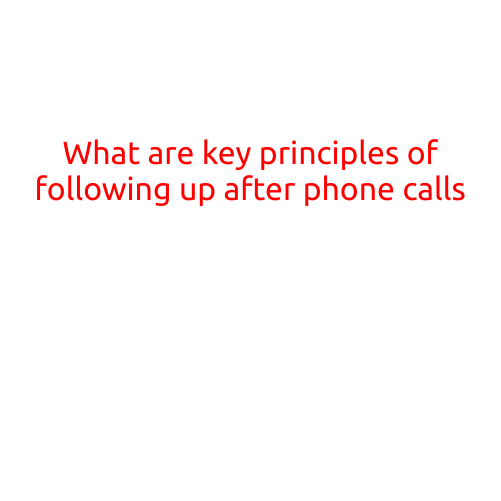
How to Handle Effective Call Transfer Practices
Effective call transfer is a crucial aspect of customer service, as it ensures that customers receive the support they need in a timely and efficient manner. When done correctly, call transfer can lead to improved customer satisfaction, reduced wait times, and increased agent productivity. However, when mishandled, it can lead to frustrated customers, lost revenue, and negative reviews. In this article, we’ll explore the importance of effective call transfer practices and provide tips on how to handle them like a pro.
Why Effective Call Transfer Matters
Effective call transfer is crucial for several reasons:
- Customer Satisfaction: When customers are transferred to a new agent, they expect to receive the same level of service and attention they would have received from the original agent. If the new agent fails to provide this level of service, customer satisfaction can suffer.
- Wait Times: Long wait times can be frustrating for customers, and transferring a call to a new agent can help reduce this wait time.
- Agent Productivity: When agents are transferred to a new call, they can quickly address the customer’s issue, freeing up time to handle other calls and increase agent productivity.
- First Contact Resolution: Effective call transfer can increase the chances of first contact resolution, reducing the need for subsequent calls and emails.
Tips for Effective Call Transfer
- Clear Communication: Before transferring a call, communicate clearly with the customer about who they will be speaking with and what they can expect. This can include the name of the new agent, the reason for the transfer, and any additional information the new agent may need.
- Reason for Transfer: Provide a clear reason for the transfer to the customer, so they understand why they have been transferred and what they can expect from the new agent.
- New Agent Introduction: When transferring a call, introduce the new agent to the customer and let them know that you are transferring the call. This helps to maintain continuity and ensures that the customer feels heard and understood.
- Contextual Information: Provide the new agent with relevant information about the customer’s issue, including any previous interactions, the outcome of any previous attempts to resolve the issue, and any relevant background information.
- Monitor and Follow-Up: Monitor the call and follow up with the customer to ensure that their issue has been resolved and that they are satisfied with the service they received.
Best Practices for Handling Call Transfers
- Use a Call Center Software: Use a call center software that allows for seamless call transfers, includes features such as call queuing, and provides real-time analytics and reporting.
- Train Agents: Train agents on effective call transfer practices, including clear communication, providing contextual information, and monitoring and following up with customers.
- Establish Clear Policies: Establish clear policies for call transfer, including guidelines for when to transfer a call, how to communicate with the customer, and how to ensure a smooth transfer.
- Monitor and Evaluate: Monitor and evaluate the effectiveness of call transfer practices, including customer satisfaction, wait times, and first contact resolution rates.
Conclusion
Effective call transfer is a critical aspect of customer service, and when done correctly, it can lead to improved customer satisfaction, reduced wait times, and increased agent productivity. By following the tips and best practices outlined in this article, you can ensure that your call transfer practices are effective and efficient, leading to a better customer experience and increased business success.





